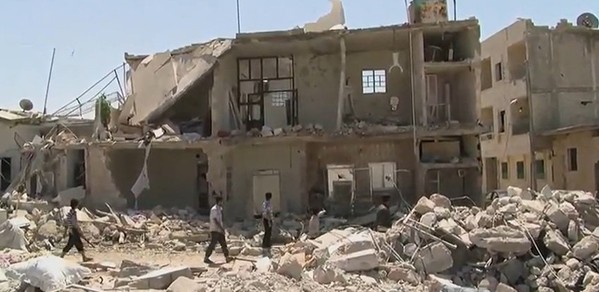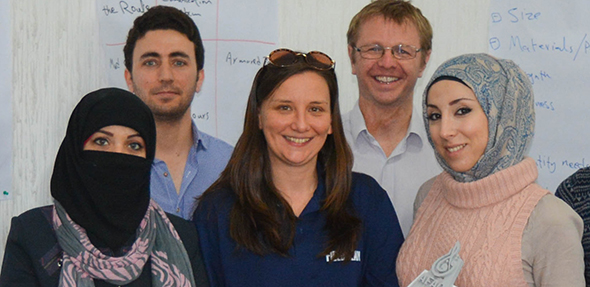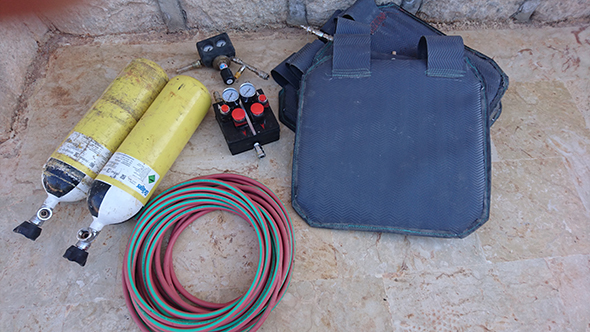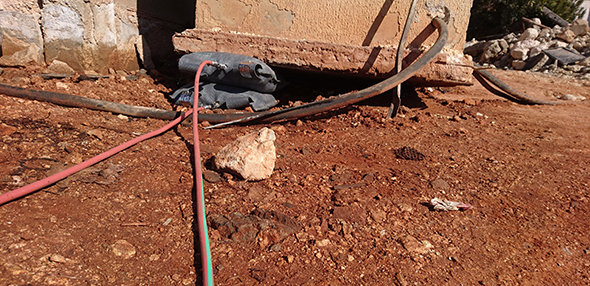
Susan Long, Manufacturing Engineering graduate (2005) from the Institute for Manufacturing (IfM), is based in the Middle East and now works for non-profit organisation Field Ready.
Within the very short time I have been involved with Field Ready’s Syria response, I have seen a ‘lifting airbag’ move from an idea to now being used to rescue civilians in the field. An engineer in the UK supported our engineers in Syria to design, prototype and test an airbag system, which can be made entirely from readily available tools and materials.
Susan Long (MET MEng 2005)
The organisation meets humanitarian need by providing solutions in health, water and sanitation using new technologies such as 3D printers and laser cutters as well as conventional manufacturing techniques.
Susan, Innovation Advisor (Turkey and Syria), is working on Field Ready’s Syria response programme to assist with the humanitarian crisis. She is part of the team that has developed a locally made ‘lifting airbag’, which rescue workers use to reach people trapped under rubble following shelling. Rescue teams were unable to get enough of the standard airbag kits for their needs and none at all in besieged areas. The locally made airbag kit costs roughly $450 compared to imported standard units, which cost around $5,000.
We caught up with her to find out more.
Field Ready is not your average engineering organisation, how did you hear about them?
I heard about this innovative organisation doing something interesting and with real impact through networks that dated back to my time as an engineering student. After reaching out to hear more, I took what was meant to be just a month-long break from my previous employment to volunteer and ended up not going back.
What does your work mainly involve?
A great deal of my time is spent meeting with current and potential partners to understand their work and the challenges they face. Field Ready isn’t about a specific product or technology, but rather seeks ways to use innovation to make things when and where they are needed, and to see this become the normal way to do things. This approach means every programme is individual. I spend a lot of time talking to people internally and externally to try and work out what this should be.

Susan Long (centre) with Syrian engineers and Field Ready staff who had participated in a 3D printing and innovation training workshop. Credit: Field Ready
What sort of impact are you making?
Within the very short time I have been involved with Field Ready’s Syria response, I have seen a ‘lifting airbag’ move from an idea to now being used to rescue civilians in the field. The airbag functions as a jack and allows rescue workers to access those trapped under rubble following shelling.
Standard kits cost around $5,000 and rescue teams in Syria were unable to get nearly enough for their needs and none at all within besieged areas. An engineer in the UK supported our engineers in Syria to design, prototype and test an airbag system, which can be made entirely from readily available tools and materials for roughly $450 (more than a 90% reduction in cost).

Field Ready Rescue Airbag Kit: regulator, valves, compressed gas tanks and set of two airbags. Credit: Field Ready
What’s next?
Growing Field Ready’s impact across the Middle East region and working with the team that is responding to the Syria crisis; allowing more people to make the things they need to move forward with their lives.
What was the driving force behind your manufacturing engineering career and have your views changed since working in the field?
For quite some time I have been concerned about the loss of jobs in various industrial sectors and the impact that this has on communities that have been built around them, like the deindustrialised part of the country I grew up in. I have been troubled by the thought that many young people living in these communities may never receive the benefit of jobs that industrialisation previously created.
Distributed manufacturing seemed to me a way technology could help to alleviate this. Field Ready has given me an insight into how it can do this and more by dramatically reducing the costs and delays in providing needed items to humanitarian crises, but also providing mechanisms for global networks to support those in extreme situations to make their own economy out of making things.

Inflated Field Ready Rescue Airbag in action. Credit: Field Ready
Why did you decide to study Manufacturing Engineering?
The breadth and diversity of the course. The fact that you learn how to develop products, and how global supply chains function, which was immensely useful when I worked in trade and investment in Asia and Africa. As a hands-on person, I was also attracted by the time spent in industry, and as an avid traveller, completing my final placement overseas was a huge bonus.
What is the most useful advice you could offer to a secondary school student trying to decide on a career path?
Develop skills in what you are passionate about, put in the groundwork to get good at it and don’t get stuck on the idea that there is a specific path. I have met lawyers, filmmakers, retail experts, teachers, even an abattoir expert, who have used their professional experience in different ways.
What do you like to do outside of work?
I’ve made a couple of fashion collections and furniture for friends and myself. I like combining fabrics from different places I’ve lived and reusing everyday and industrial items.
This article has been edited from the IfM website.

